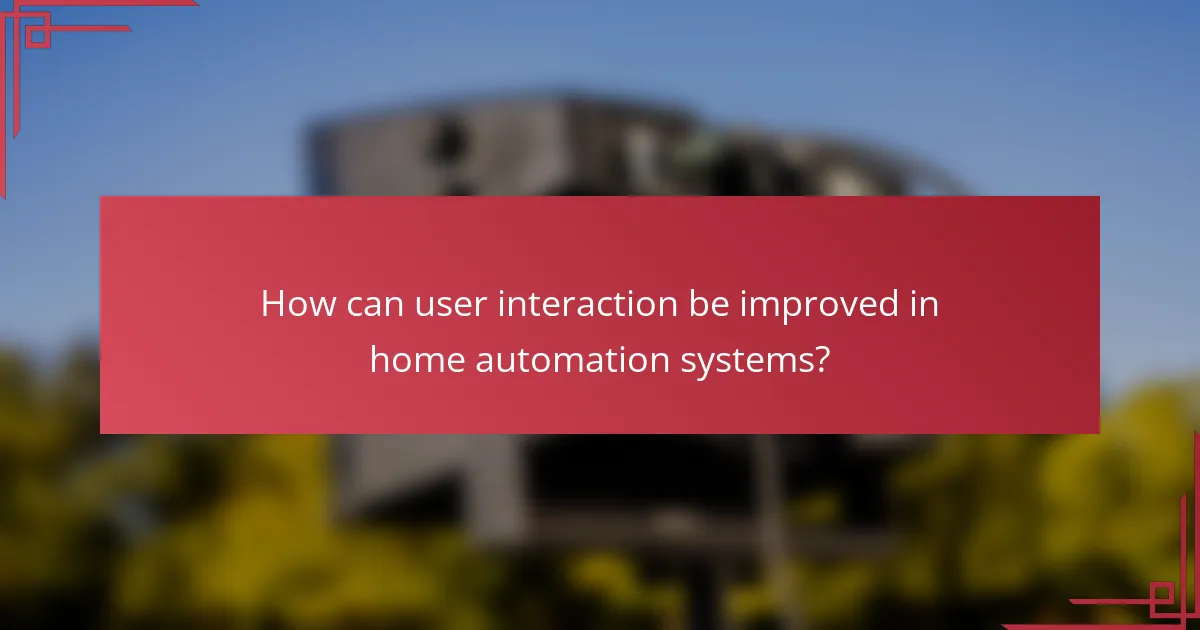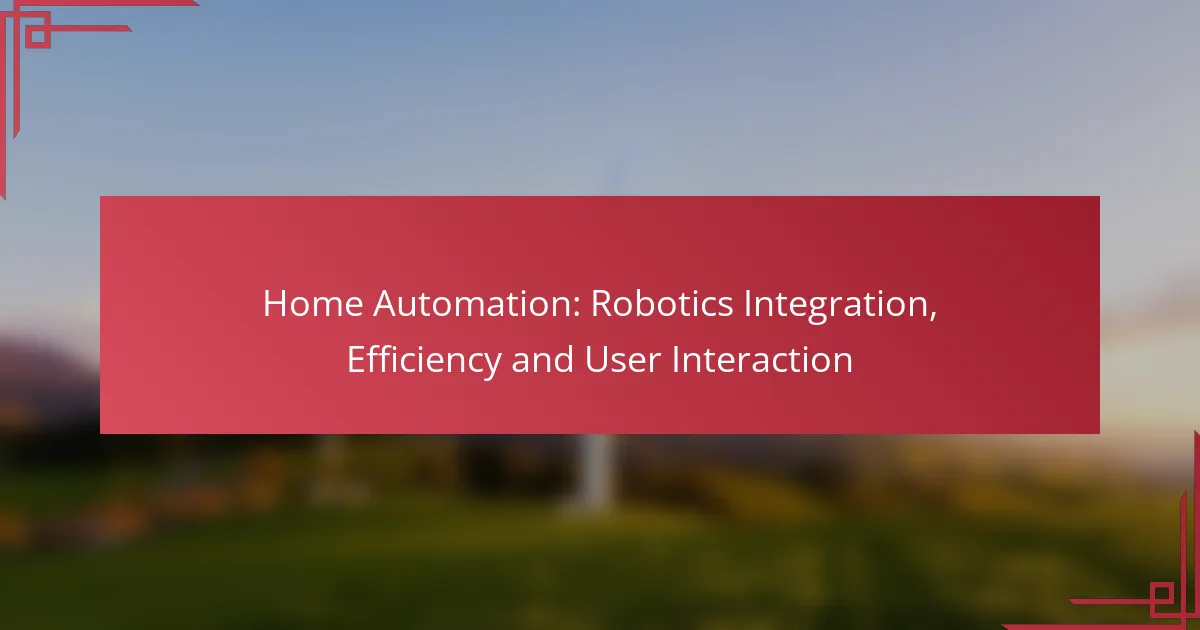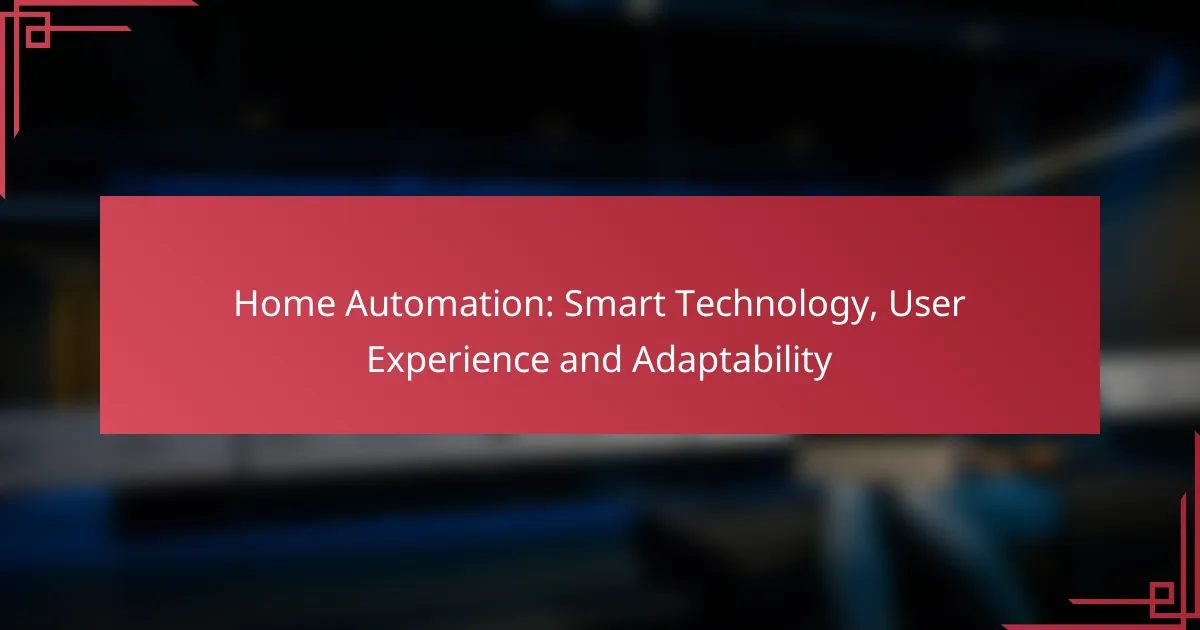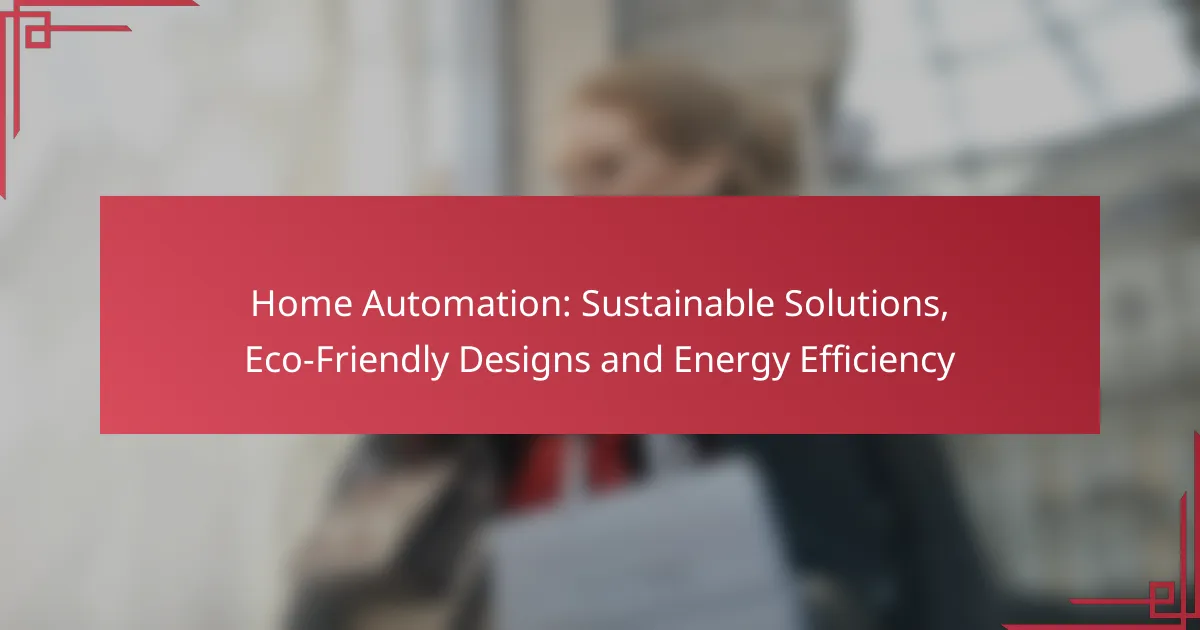Home automation is revolutionizing daily living by integrating advanced robotics that enhance efficiency and user interaction. With technologies like smart home hubs and robotic vacuum cleaners, homeowners can enjoy greater convenience and security while streamlining their daily tasks. This seamless integration not only saves time but also optimizes energy use, creating a more comfortable and efficient living environment.

What are the best home automation solutions in Ireland?
The best home automation solutions in Ireland include smart home hubs, robotic vacuum cleaners, smart lighting systems, and home security systems. These technologies enhance convenience, efficiency, and security in daily life, making them popular choices among homeowners.
Smart home hubs like Google Nest
Smart home hubs, such as Google Nest, serve as central control points for various smart devices in your home. They allow users to manage lighting, temperature, and security systems through voice commands or mobile apps.
When selecting a smart home hub, consider compatibility with your existing devices and the ease of integration. Google Nest works well with a wide range of products, making it a versatile choice for many households in Ireland.
Robotic vacuum cleaners such as iRobot Roomba
Robotic vacuum cleaners like the iRobot Roomba automate the cleaning process, saving time and effort. These devices navigate your home, using sensors to avoid obstacles and efficiently clean floors.
When choosing a robotic vacuum, look for features such as scheduling options, battery life, and suction power. Many models are priced in the mid to high range, but investing in a quality unit can significantly reduce your cleaning workload.
Smart lighting systems from Philips Hue
Smart lighting systems, such as Philips Hue, allow users to control lighting remotely and customize settings for different moods or activities. These systems can be programmed to change colors or brightness based on time or user preferences.
Consider the initial setup costs and the potential energy savings when investing in smart lighting. Philips Hue products are generally compatible with various smart home hubs, enhancing their functionality and integration.
Home security systems like Ring
Home security systems, such as Ring, provide enhanced safety through features like video doorbells, security cameras, and motion sensors. These systems can be monitored remotely via smartphone apps, offering peace of mind to homeowners.
When selecting a home security system, evaluate the subscription costs for cloud storage and additional features. Ring offers various packages, allowing users to choose a plan that fits their security needs and budget in Ireland.

How does robotics enhance home automation?
Robotics significantly enhances home automation by providing advanced functionalities that streamline daily tasks, improve efficiency, and enhance user interaction. These robotic systems can perform various chores autonomously, allowing homeowners to save time and effort while maintaining a comfortable living environment.
Automated cleaning with robotic vacuums
Robotic vacuums automate the cleaning process by navigating through your home to remove dirt and debris without human intervention. These devices use sensors and mapping technology to efficiently cover floors, avoiding obstacles and returning to their charging stations when needed.
When selecting a robotic vacuum, consider factors such as battery life, suction power, and smart features like scheduling and app control. Popular models typically range from $200 to $1,000, depending on their capabilities and brand reputation.
Smart assistants for voice control
Smart assistants enable voice control of various home automation systems, allowing users to manage devices hands-free. These assistants can control lighting, temperature, and security systems, making it easier to create a comfortable and secure environment.
When integrating smart assistants, ensure compatibility with your existing devices and consider privacy settings. Devices like Amazon Echo or Google Nest typically range from $50 to $300, depending on their features and audio quality.

What are the benefits of integrating robotics in home automation?
Integrating robotics in home automation offers significant advantages, including enhanced efficiency, improved convenience, and increased security. These benefits stem from the ability of robotic systems to perform tasks autonomously, optimize energy use, and provide real-time monitoring and control.
Increased energy efficiency
Robotics can significantly enhance energy efficiency in homes by automating tasks such as lighting control, temperature regulation, and appliance management. For instance, smart thermostats can learn user habits and adjust heating or cooling accordingly, potentially reducing energy bills by up to 20%.
Additionally, robotic systems can monitor energy consumption in real-time, allowing homeowners to identify and eliminate wasteful practices. Implementing energy-efficient devices and integrating them with a home automation system can lead to substantial savings over time.
Enhanced user convenience
Robotic integration in home automation simplifies daily tasks, making life more convenient for users. Automated systems can handle chores like vacuuming, lawn mowing, and even grocery delivery, freeing up time for other activities.
Moreover, voice-activated assistants and mobile apps allow users to control their home environment from anywhere, enhancing comfort and accessibility. This level of convenience is particularly beneficial for individuals with mobility challenges, as it enables them to manage their homes with ease.
Improved home security
Integrating robotics into home automation significantly boosts security measures. Smart cameras, motion sensors, and robotic security systems can monitor properties continuously, providing alerts for unusual activities. Homeowners can receive real-time notifications on their smartphones, allowing for immediate action if needed.
Furthermore, robotic systems can simulate occupancy by controlling lights and appliances, deterring potential intruders. This proactive approach to security not only protects the home but also provides peace of mind for residents.

What factors should you consider when choosing home automation products?
When selecting home automation products, consider compatibility with your existing devices, ease of use and installation, and the level of customer support and warranty offered. These factors ensure a seamless integration into your home and a satisfactory user experience.
Compatibility with existing devices
Ensure that the home automation products you choose are compatible with your current devices and systems. This includes checking if they work with your smart speakers, security systems, and other connected devices. For example, products that support popular standards like Zigbee or Z-Wave tend to have broader compatibility.
To avoid issues, review the manufacturer’s specifications and user reviews. Some products may require specific hubs or controllers, which can add to your overall cost and complexity.
Ease of use and installation
Look for home automation products that are user-friendly and easy to install. Many devices offer plug-and-play setups, while others may require more technical knowledge. Assess whether you prefer a DIY approach or if you would rather hire a professional for installation.
Consider products with intuitive mobile apps or web interfaces that simplify control and customization. A good rule of thumb is to choose devices with clear instructions and strong user feedback regarding setup and usability.
Customer support and warranty
Evaluate the customer support options available for the home automation products you are considering. Reliable support can be crucial if you encounter issues during installation or operation. Look for companies that offer multiple support channels, such as phone, chat, and email.
Additionally, check the warranty terms. A longer warranty period often indicates the manufacturer’s confidence in their product. Aim for at least a one-year warranty, but longer coverage can provide added peace of mind.

What are the costs associated with home automation in Ireland?
The costs of home automation in Ireland can vary widely based on the complexity and scale of the system. Homeowners should consider initial setup costs, ongoing subscription fees, and maintenance expenses when budgeting for automation solutions.
Initial setup costs
Initial setup costs for home automation can range from a few hundred to several thousand euros, depending on the technology and number of devices installed. Basic systems may include smart lighting and security cameras, while more advanced setups could involve integrated heating, cooling, and entertainment systems.
When planning your budget, consider the cost of devices, installation fees, and any necessary infrastructure upgrades. Hiring a professional installer can add to the initial expense but may ensure a more seamless integration.
Ongoing subscription fees
Many home automation systems require ongoing subscription fees for cloud services, software updates, and premium features. These fees can range from approximately €5 to €30 per month, depending on the service provider and the features included.
It’s important to evaluate what services are essential for your needs. Some systems offer free basic services, while advanced functionalities like remote access or enhanced security features may incur additional costs.
Maintenance and upgrades
Maintenance and upgrades are crucial for keeping your home automation system functioning optimally. Regular maintenance might include software updates and troubleshooting, which can be done by the homeowner or a professional, depending on your comfort level.
Budget for occasional upgrades as technology evolves. Investing in new devices or features can enhance your system’s efficiency and capabilities, but ensure that these upgrades are compatible with your existing setup to avoid additional costs.

How can user interaction be improved in home automation systems?
User interaction in home automation systems can be enhanced through intuitive design, responsive interfaces, and personalized experiences. By focusing on user-friendly controls and seamless integration, homeowners can engage more effectively with their automated environments.
Intuitive User Interfaces
Intuitive user interfaces are crucial for improving interaction in home automation. These interfaces should be simple, visually appealing, and easy to navigate, allowing users to control devices with minimal effort. For instance, using touchscreens with clear icons or voice commands can significantly enhance usability.
Consider implementing customizable dashboards that allow users to prioritize their most-used features. This personalization can lead to quicker access and a more satisfying user experience.
Voice Control Integration
Integrating voice control into home automation systems can greatly enhance user interaction. Voice-activated assistants, such as Amazon Alexa or Google Assistant, allow users to control devices hands-free, making it easier to manage tasks while multitasking.
When setting up voice control, ensure that the system accurately recognizes commands in different accents and languages. Regular updates and training of the voice recognition software can improve accuracy and user satisfaction.
Feedback Mechanisms
Feedback mechanisms are essential for informing users about the status of their home automation systems. Providing visual or auditory feedback when a command is executed helps users understand that their input has been acknowledged.
Consider using notifications or alerts for important events, such as security breaches or system malfunctions. This proactive communication can enhance user confidence and engagement with the system.
Personalization and Adaptability
Personalization and adaptability can significantly improve user interaction in home automation. Systems that learn from user behavior can adjust settings automatically, creating a more tailored experience. For example, smart thermostats can learn your schedule and adjust temperatures accordingly.
Encourage users to set preferences and routines that reflect their lifestyles. This customization can lead to increased satisfaction and a more seamless integration of technology into daily life.



